Trafford Park Village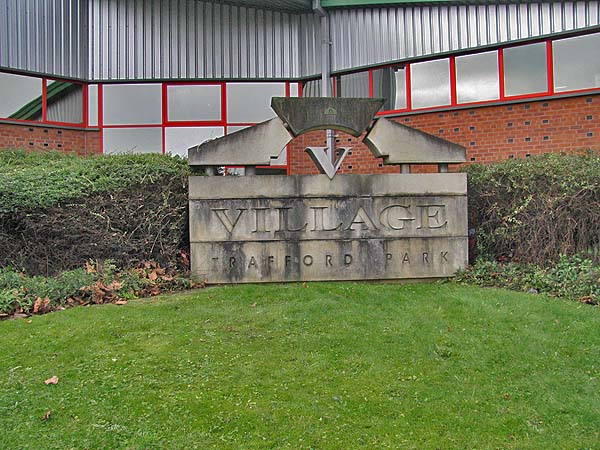  On the corner of Village
Way and Second Avenue in Trafford Park this monument
stands on a grass verge behind railings. The name
of the road and the monument refer to the Trafford Park
Village of which there are only a few remnants
today. After the Manchester Ship Canal was
completed in 1894 an extensive system of wharves, lined
with warehouses, were created at the Salford end.
The area around these docks became an obvious focus for
further industrial and commercial development.
Factories, mills and warehouses were built to take
advantage of the commercial opportunities offered by the
new port.
The first American company to build a factory was the Westinghouse Electrical Company, founded in 1886 by George Westinghouse. A British subsiduary of the US company, called British Westinghouse Electric Company, built a factory at a place called Water Meeting beside the Bridgewater Canal. 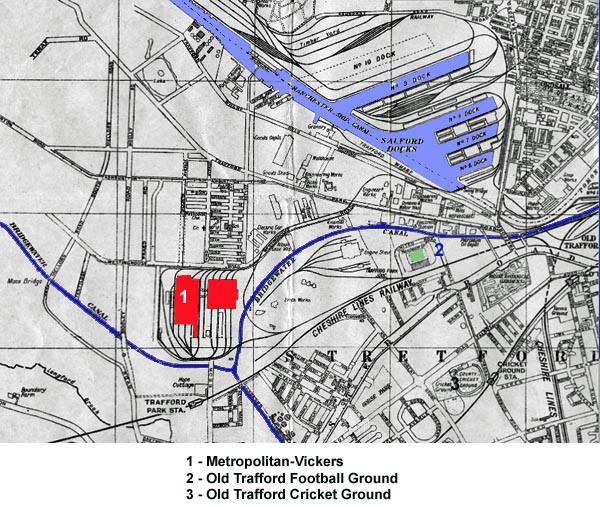 In addition to the
factory Westinghouse built a village for his workers
on the American style grid system of avenues and
streets. The community had shops, eating
rooms, a dance hall, schools, a church, and a
cinema. The village can be seen in the map
extract below dated 1930.
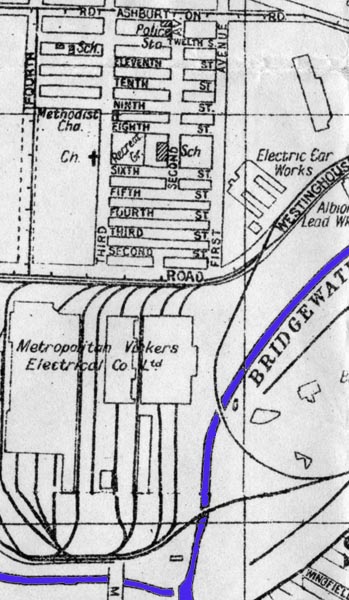 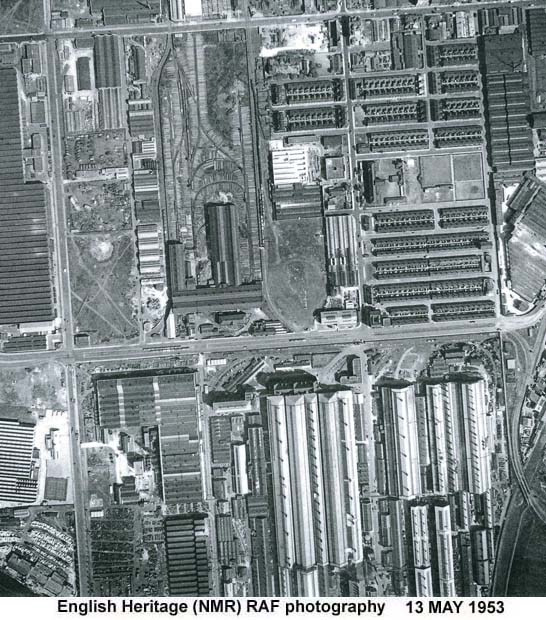 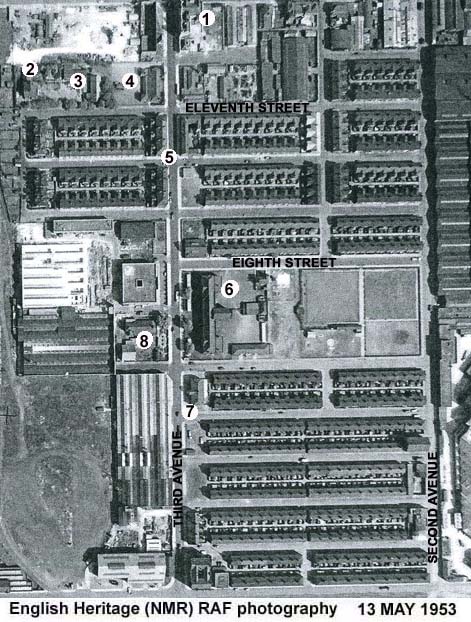
************************ If you turn off
Village Way today you will find that the streets
and avenues are still there, as are some of the
public buildings, but for the most part the
houses are gone. Below is a visual tour of
the Trafford Park Village in January 2010.
 Third Avenue looking
south with the Village Heritage Centre, in the St.
Antony's Centre, on the right and beyond the remaining
rows of shops.
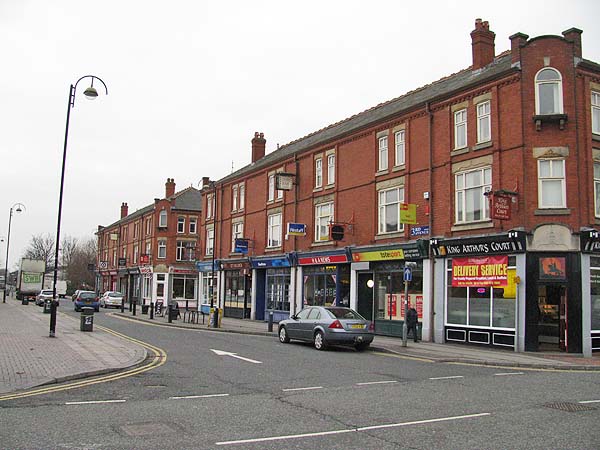 Above: the Third Avenue Shops 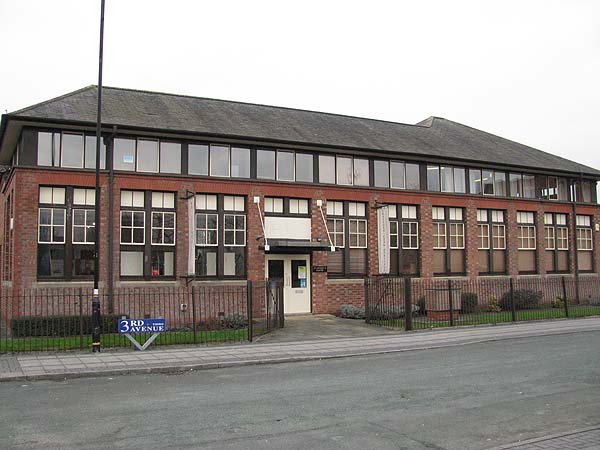 Saint Antony's Centre 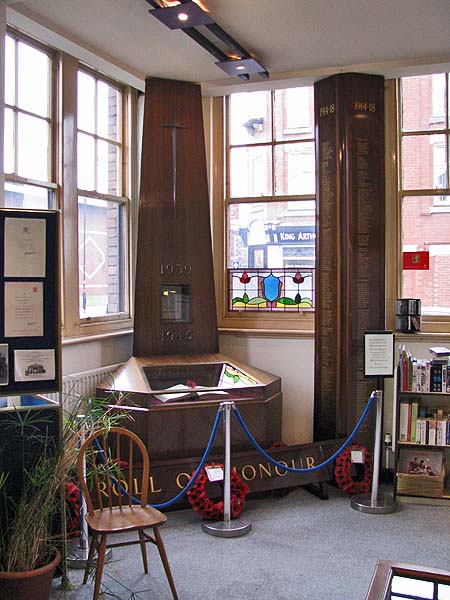 The War Memorial from the
Metropolitan Vickers Factory in the Village Heritage
Centre.
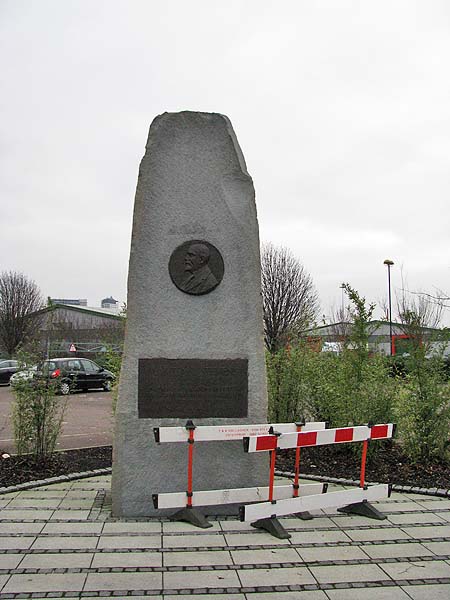 Across Third Avenue from
the St Antony Centre stands this memorial to Marshall
Stevens, who is credited with being a prime mover in the
creation of the Trafford Park Industrial Estate.
 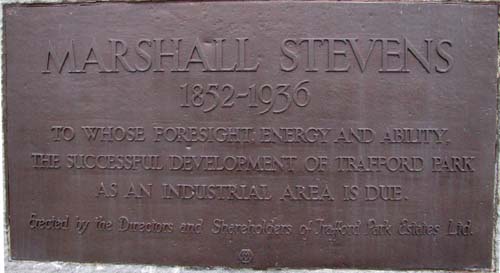 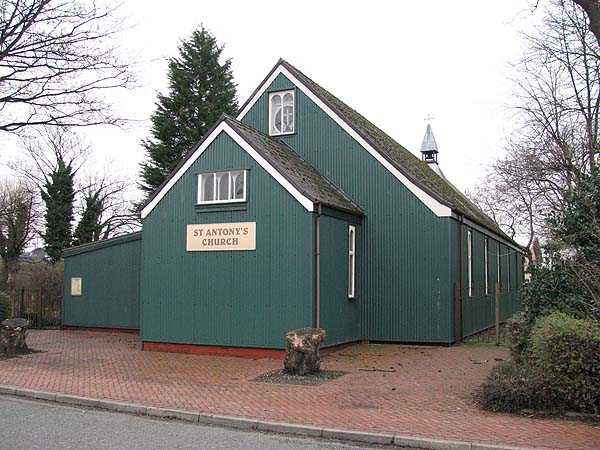 St Antony's Church on
Eleventh Street. It was built as a temporary
structure in 1904 but as you can see it is still there
and it was reclad in green corrugated iron in 1994.
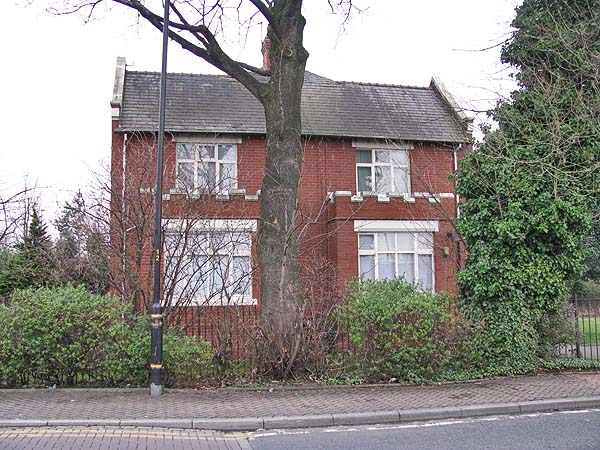 On the corner of
Eleventh Street and Fifth Avenue stands the presbytery
and in the garden between it and the church is what
seems to be a shrine.
 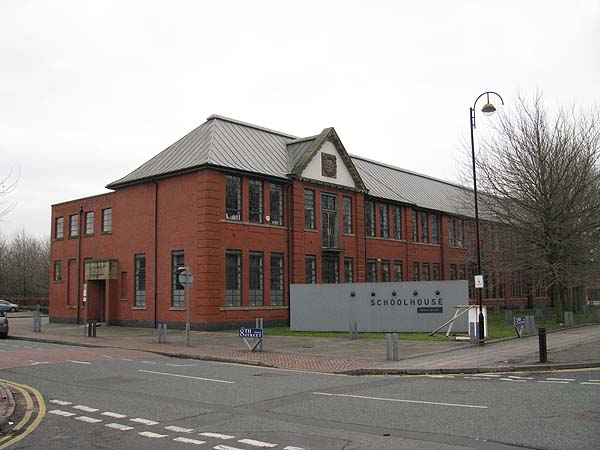 The Village School was
built in 1914. Since much of the village was
demolished in the 70s and 80s the school closed and the
building was a candidate for demolition. The
building was saved and renovated by Urban Splash
creating a residential complex that was awarded a
prestigious RIBA award in 1996.
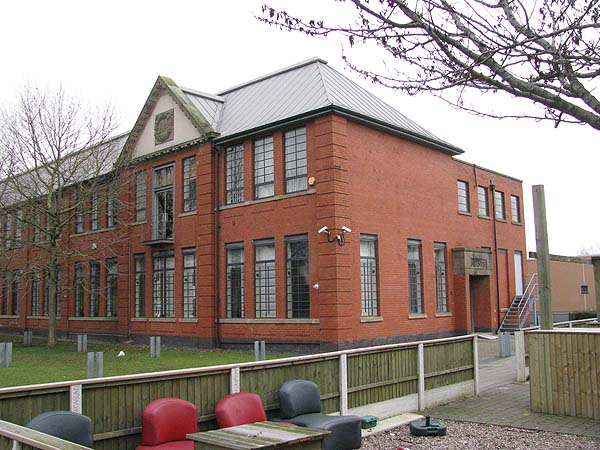 Over the entrance doors
at either end of the building Urban Splash retained the
stone "INFANTS" sign.
  They found an
interesting use for the school signs for "GIRLS" and
"BOYS" incorporating them into the public toilets that
can be found between the two terraces of shops.
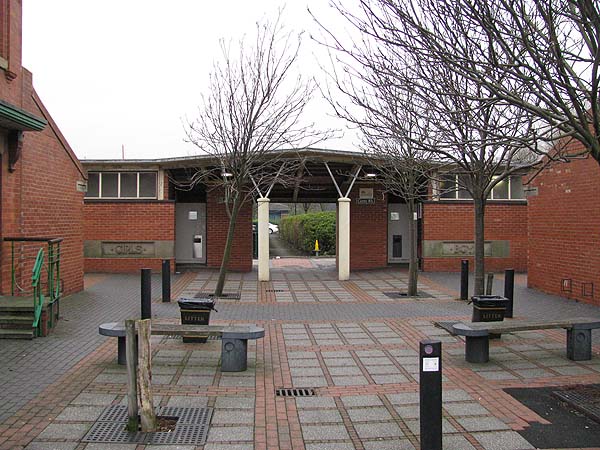  This plaque has been
attached to the side of one of the shops.
"This building was formally dedicated to the Cooper family who were family traders in the village from 1906 - 1994 by Mr. Chris Cooper on Tuesday 17th October 1995, following a substantial refurbishment program by Trafford Park Development Corporation."  Above: The former Parish Church of St. Cuthbert's 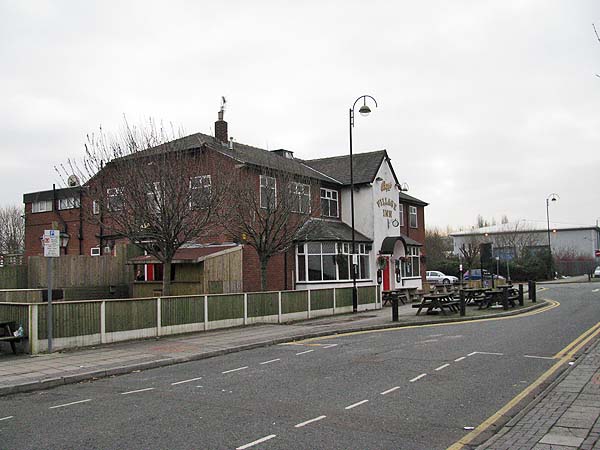 Above: The Village Inn 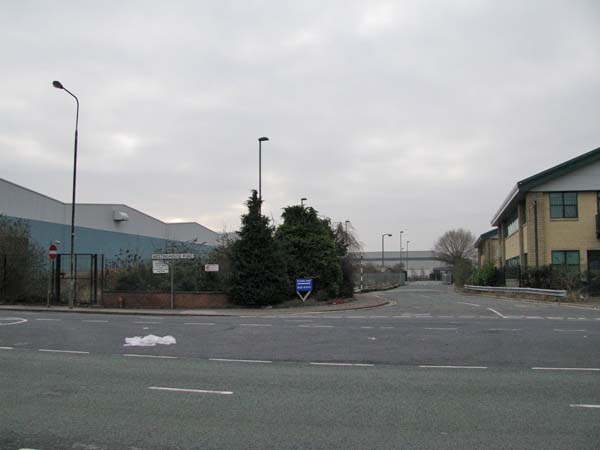 This used to be the
entrance into the Westinghouse - later Metro-Vicks -
factory. You can see the spot marked with an arrow
on the old photograph below.
 Below; The Trafford Park Hotel - now closed and up for sale.  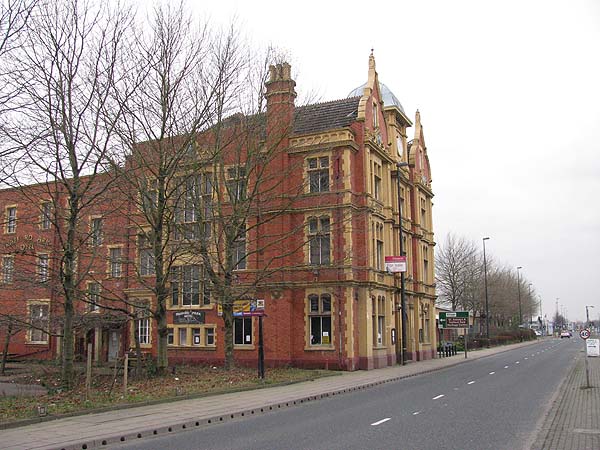  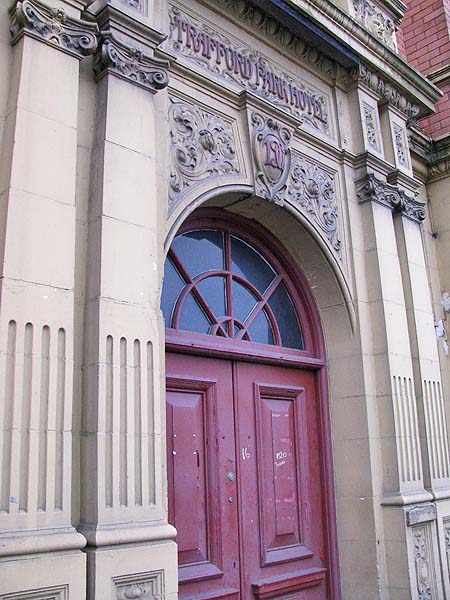 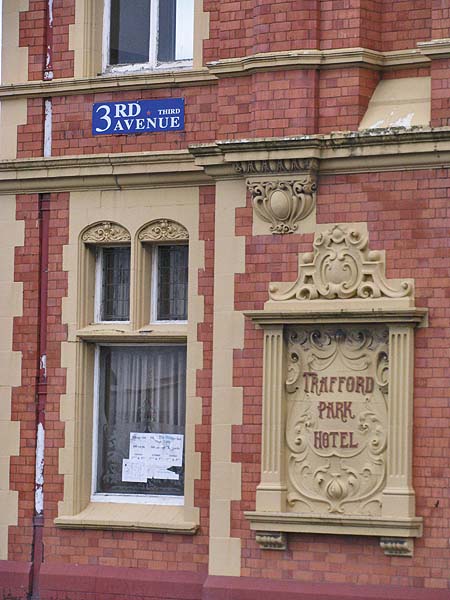 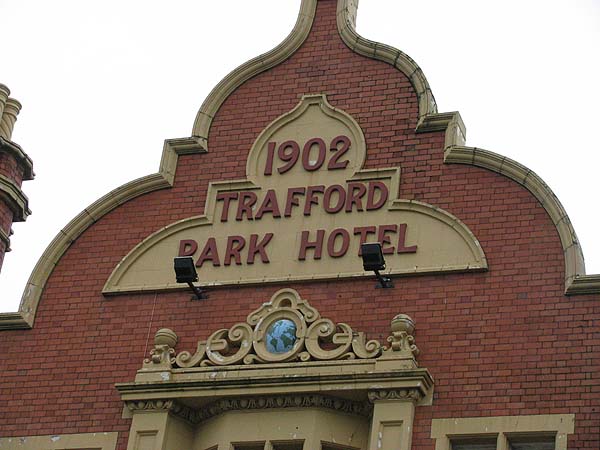  |